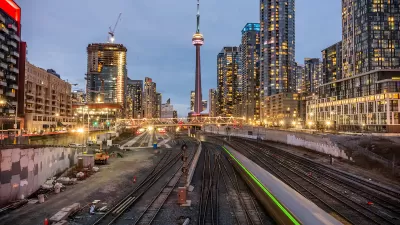While parks adjacent to affluent areas of New York City, such as Central Park or the High Line, are benefiting from record levels of private contributions, open spaces in poorer communities are struggling to fund routine maintenance.
Individual donations of $100 million to Central Park, $20 million to complete the High Line, and $40 million for a new field house in Brooklyn Bridge Park are among the types of headlines that supporters of parks such as Flushing Meadows-Corona in Queens (whose conservancy attracted $5,000 in donations last year) can only dream of. As the city's parks increasingly become objects of philanthropy, the disparity in donations is being reflected in the quality of each community's open spaces, reports Lisa W. Foderaro.
"The largess has delighted city officials, who say it will ensure that New York’s signature parks have the resources to remain pristine while accommodating millions of visitors a year. But the donations have also highlighted the disparity between parks in Manhattan’s high-rent districts and those, like Flushing Meadows-Corona or Van Cortlandt Park in the Bronx, that are in less affluent communities. In those parks, conservancies and friends groups must struggle to raise any money at all."
Although the Central Park Conservancy, the nonprofit group that operates the park for the city, has been generous in helping to maintain a dozen other city parks, there are fears that the increase in private financing will result in a corresponding drop in public support system-wide. Since 2008, "the total expense budget for parks, which includes maintenance, has fallen to $338 million, from $367 million," notes Foderaro.
"While praising the recent generosity toward parks, Holly M. Leicht, executive director of New Yorkers for Parks, said she hoped that the city could devise ways to somehow share the wealth."
“Even though it’s great that there are individual gifts to individual parks, it’s a park system,” Ms. Leicht said. “That lends itself to having a broad-based fund or thinking creatively about funding.”
FULL STORY: New York Parks in Less Affluent Areas Lack Big Gifts

Planetizen Federal Action Tracker
A weekly monitor of how Trump’s orders and actions are impacting planners and planning in America.

Restaurant Patios Were a Pandemic Win — Why Were They so Hard to Keep?
Social distancing requirements and changes in travel patterns prompted cities to pilot new uses for street and sidewalk space. Then it got complicated.

Maui's Vacation Rental Debate Turns Ugly
Verbal attacks, misinformation campaigns and fistfights plague a high-stakes debate to convert thousands of vacation rentals into long-term housing.

In California Battle of Housing vs. Environment, Housing Just Won
A new state law significantly limits the power of CEQA, an environmental review law that served as a powerful tool for blocking new development.

Boulder Eliminates Parking Minimums Citywide
Officials estimate the cost of building a single underground parking space at up to $100,000.

Orange County, Florida Adopts Largest US “Sprawl Repair” Code
The ‘Orange Code’ seeks to rectify decades of sprawl-inducing, car-oriented development.
Urban Design for Planners 1: Software Tools
This six-course series explores essential urban design concepts using open source software and equips planners with the tools they need to participate fully in the urban design process.
Planning for Universal Design
Learn the tools for implementing Universal Design in planning regulations.
Heyer Gruel & Associates PA
JM Goldson LLC
Custer County Colorado
City of Camden Redevelopment Agency
City of Astoria
Transportation Research & Education Center (TREC) at Portland State University
Jefferson Parish Government
Camden Redevelopment Agency
City of Claremont



























